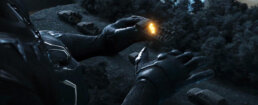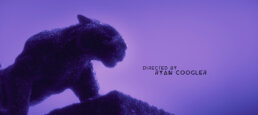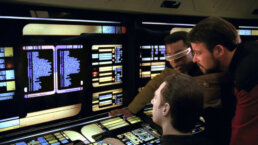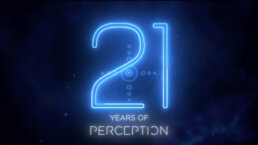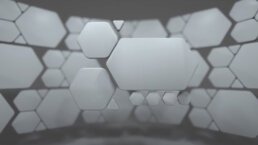On February 16th, 2022, our team celebrated the fourth anniversary of the release of Marvel Studios’ Black Panther. Between conceptualizing the completely innovative technology of Wakanda and designing a powerful main on end title sequence, Black Panther has quickly become one of our favorite and most memorable projects.
We took a week to celebrate this film and its impact in cinema while also commemorating our contributions to it on our social media pages. We shared some awesome shots of our designs, as well as some motion studies and concept work. But as we were doing this celebration, behind the scenes, we were taking the time to reflect on how Black Panther has become more than just an incredible film that we worked on. Black Panther has changed our approach to how we conceptualize, develop, and design technology.
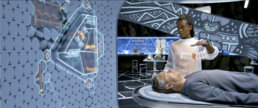
Typically, when we design a piece of technology, whether it’s an interface, a hologram, or anything else, we want the final product to be beautiful, vivid, and at an extremely high level of sophistication and fidelity. When our work pops up on the screen, we want the user or audience to pause, even for just a moment, and appreciate how visually dynamic that design is and how cool it would be to interact with it.
With Black Panther, we took a step back from visualizing the exciting final design and even put the ideas of what the final design would look like to the side. We were in charge of conceptualizing the technology of Wakanda – a hidden technological gem in the world.
The technology of Wakanda is more advanced than any technology we’ve seen in the Marvel Cinematic Universe, even more so than the technology created by Tony Stark, who existed at the top of the technological “food chain”. We had to go beyond Stark Technology and invent something that was futuristic, fascinating, but also realistic. Nothing was meant to be magical, but rather, innovatively practical. Technology is at the heart of Wakandan society, and therefore, there were more important aspects to focus on than just its visual appeal.
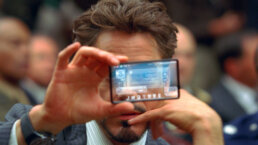
For the most part, none of the technology in this film had ever been seen, let alone heard of before. The only glimpse that the audience had gotten of Wakandan technology was Vibranium, which was already a pretty ambiguous substance. Prior to Black Panther, Vibranium has appeared in the forms of Captain America’s shield, Ultron’s armor, and Vision’s body – three very different uses.
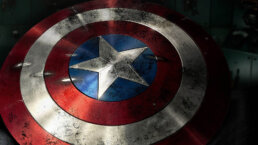
The team at Marvel Studios informed our team that Vibranium went beyond what we had seen in previous films. This substance wasn’t just a strong metal, it had a unique and distinguished reaction to sound that we wanted to explore, and it was also used in practically all aspects of Wakandan life and culture. From clothing and weapons to transportation and medicine, we realized that Vibranium was a nearly blank canvas with a rich history and endless possibilities. From here, we knew that focusing on the stories and functions of technology like Vibranium more than its design would actually enhance the final product.
Together we decided that, first and foremost, the only things that mattered when approaching our work with Black Panther were the core ideas of how and why these technologies work and function in the way that they do. We needed to put a greater emphasis on figuring out what interesting mechanics are at play in generating the gadgets and tech in the world of Wakanda that we couldn’t worry about the level of fidelity, how it would be presented, or how the render would look. We needed to stay entirely focused on the mechanical and logical aspects of it.
We invested a lot of energy into how the tech would actually work and we asked each other questions to gain a deeper understanding of these functions. How does the tech operate? What does it feel like when you hold it? Is it loud? Is it easy to operate, or would someone more trained be more suited to use it? Does it project images, and if it does, how does that feature work and what do those images look like because of the projection mechanics?
To help answer these questions, we researched and looked at every angle of these technologies under a microscope. Nothing could be just “cool” – it had to be real and functioning because it is so deeply ingrained into Wakandan society. In a sense, the final look wasn’t crucial – the story was. There had to be a background to everything, and while the audience may not know what that exact background is, they can tell that this tech has been meticulously worked on and developed over the years. While it may not exist in our world, it certainly feels like, with the right minds working on it, it could.
The research we conducted allowed us to better understand how we could conceptualize and design such innovative technology. For example, our concept for Vibranium Sand stemmed from research performed at the University of Tokyo where ultrasonic sound waves were being used to manipulate tiny styrofoam particles. These waves could cause the particles to levitate and move depending on the length of the wave. We studied these behaviors and applied them to how Vibranium Sand could shift and morph, not just on a small scale like with a handful of styrofoam particles, but also on a larger scale, where the sand could form statues and vehicles. This opened up the possibilities for Vibranium Sand’s applications while still keeping everything based in studies.
This all circles back to Perception’s design model where we take inspiration from real world technology and apply it to our film technology, and vice versa. It’s important to help ground our film designs in reality, because nothing should ever feel too unbelievable. Using research and reality as a basis allows the audience to imagine that this could exist, and if it could exist, how could it work? We want to lead them back to the questions we ask ourselves at the beginning of the design process and see beyond the futuristic screens.
Black Panther simply allowed us to ingrain this model even deeper into all of our work by thinking beyond the surface level. It wasn’t just about the design, it was about creating an intricate history to every piece, feature, and function of these technologies.
Ever since Black Panther, when we approach film work, we’ve become increasingly interested in figuring out how the technology works and how the technology can operate in a way that further differentiates this film from other films. In finding different ways for the technology to work and function, that will lead the design to go down a different path than what is traditionally seen in other films. What the audience is seeing should not just be a map or a hologram or an interface – it should be branded to that film in a way that makes it completely unique.
Black Panther was an avenue to finding new ways of making our designs much more interesting because so much thought, logic, and understanding of mechanics has gone into the design beforehand. It makes the audience much more fascinated in those designs, and even if they do not explicitly understand the exact mechanics of how these technologies work, they can sense that there is something more to these designs than just its appearance. It invites a deeper curiosity into the world of Wakanda and how these technologies came to be. It invites them to think, to wonder, and to immerse themselves in the thought of what could be.
To take a deeper look at the technology of Wakanda and learn more about our process of conceptualizing this tech, check out our Black Panther case study!
Experience Perception
Perception is an Emmy nominated design lab pioneering the visionary process of Science Fiction Thinking to architect the future. We divide our time equally between the parallel worlds of science-fiction—working with trailblazing filmmakers, and science-fact—collaborating with the world’s most innovative technology brands.
